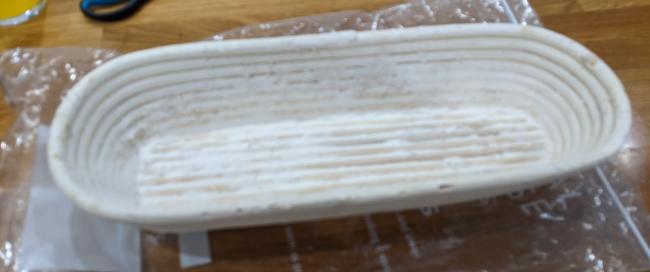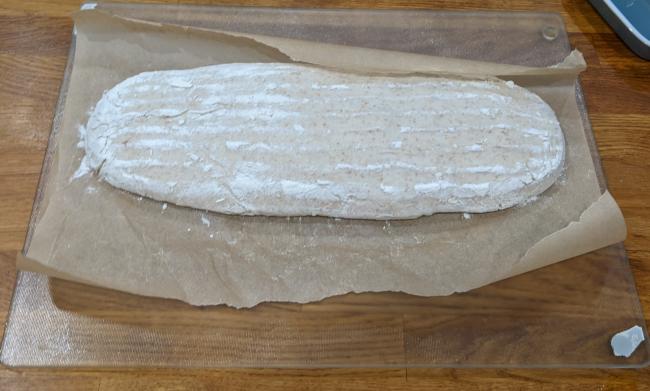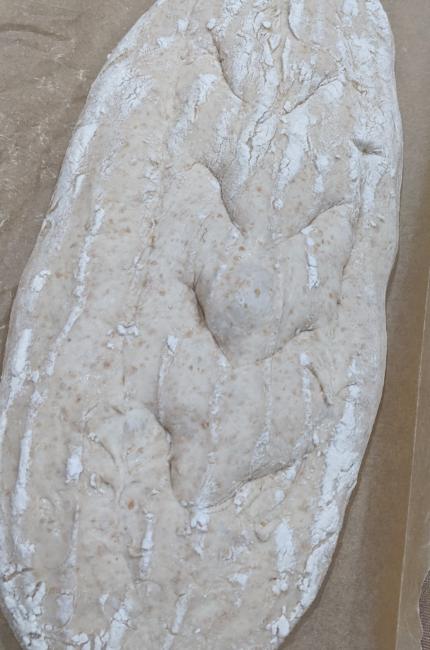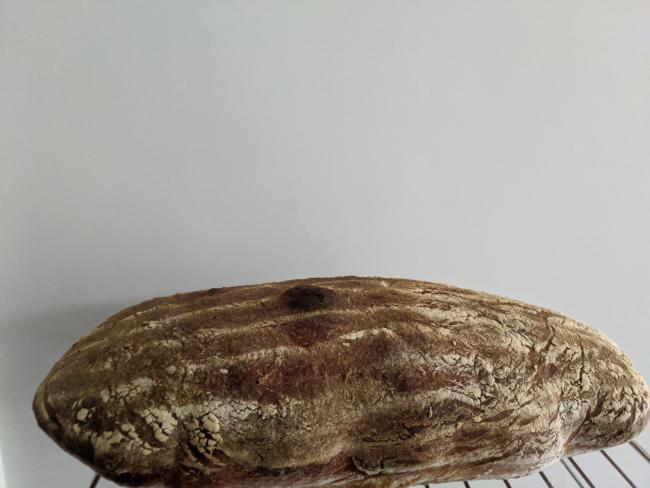
We popped into a local kitchen shop whilst holidaying in Wales, and was delighted to see they had a selection of banneton baskets. So, I purchased a longer, oval-shaped basket to try and mix things up!
This presented a dilemma though: the basket was longer than any of my Dutch ovens so I needed to look at a different method to bake.



The building blocks here were still the same: a 45 minute autolyse of flour mixed with water, then adding the starter and salt and completing a series of stretch-and-folds before leaving for the bulk rise. I then shaped and transferred the dough to the new, longer basket and left for the second rise. This part was a bit trickier as I had got used to shaping a round boule, and instead, I needed to create a longer shape.
The main challenge was deciding how to bake the loaf. Usually, I would transfer the dough to a Dutch oven which had been pre-heated in the oven and baked for 20 minutes with the lid on and 20 minutes with the lid off. The Dutch oven apparently recreates the atmosphere of a professional bakers oven and ensures there is sufficient steam, heat and pressure to get the rise needed for a sourdough loaf. So I needed another way to recreate these conditions. Doing a bit of research online, the consensus seemed to be to add two baking trays into the oven - one at the top, and one at the bottom - and to add a pan of water underneath the bottom tray. The idea being that the water will boil and create a steamy environment and the two pans would trap the heat and steam meaning the loaf, placed on the bottom tray, would adequately rise.
I decided to go half-way: I have two large baking sheets that are as wide as the oven so I placed one at the top and one at the bottom and heated the oven to 260C. If I'm completely honest, I wasn't sure if the pans can withstand that sort of heat, but bearing in mind they came with the oven, I just went with it!
I didn't add a pan of water. I wasn't convinced it was necessary and wanted to try without it and then revisit if it was a total disaster. When the loaf was ready, I baked for 20 minutes, then reduced the temperature to 230C and baked for a further 20 minutes.
I was really pleased to see similar results to my other bakes: it had risen adequately and had the same consistency and crust. If anything, I needed to reduce either the temperature or cooking time as it had burnt slightly. This was inevitable really, seeing as there wasn't any Dutch oven to provide the usual protection. But on the whole - a pretty good result!

